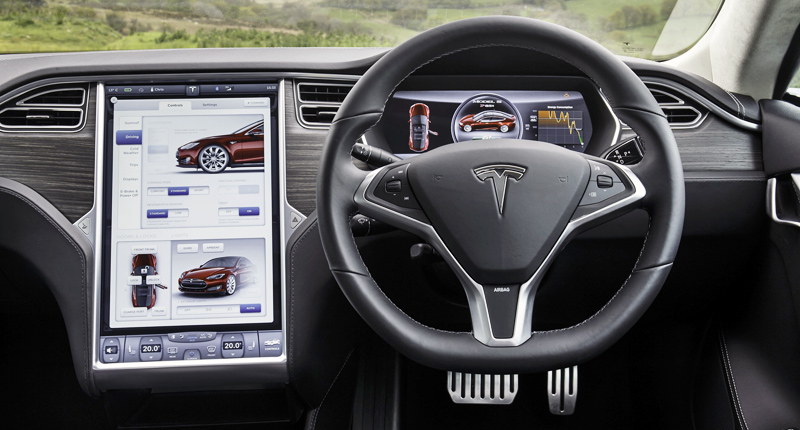AI is disrupting education. But despite what the headlines (and some ChatGPT horror stories) might suggest, South African teachers aren’t being replaced — they’re…
Why smartphone-mimicking dashboards aren’t such a smart idea after all

We’ve been saying it for ages. Controls for infotainment and other in-cabin functions that are often used while on the move should NOT be buried deep within touchscreen menus. Or indeed be sited on touchscreens at all.
Yes, many of the latest smartphone-aping interfaces in cars are rather impressive. Many are even highly intuitive, incorporating the swiping and pinching functions to which technophiles have long been accustomed. And all serve to declutter the dashboard of buttons, leading to an interior design that is generally far more pleasing to the eye.
But, in terms of safety and functionality, most of these systems fall well short – when used by the driver of a moving vehicle, anyway. Try, for example, adjusting the climate control’s fan speed when you have to navigate through even just two or three sub-menus. How long did you have to take your eyes off the road?
If you ask us, too long. Far too long. With traditional, “physical” buttons, the driver can often make such adjustments without even looking away from the road at all, since it’s all done by feel and familiarity.
The same applies to many other on-the-move tasks, from adjusting music settings to initiating a (hands-free) phone call. We maintain that utilising steering wheel mounted controls (and even voice control) is ultimately a far safer alternative. Even systems such as BMW’s iDrive or Audi’s MMI – which work via console-mounted rotary controllers – are distinctly superior from a safety standpoint.
Of course, the idea of the integrated touchscreen mimicking a smartphone ostensibly stems from an attempt by automakers to encourage motorists not to use their phones while behind the wheel. But, while the (apparent) hands-free intention may be noble, the outcome is arguably largely the same in terms of distracted driving. Eyes off the road are eyes off the road, after all.
So, surely there must be some sort of legislation – similar to laws around texting and driving – in place when it comes to dashboard touchscreens? Well, not really anything extensive, if we’re honest. Not yet, at least. This means that, for example, internet-enabled systems – such as the setup found on the massive 17-inch display in the Tesla Model S – can call up virtually any website (and even social media apps) when on the move.
But in the United States, the National Highway Traffic Safety Administration (NHTSA) has drawn up a set of guidelines around dashboard displays in moving cars, warning against screens that include photographs or moving images “unrelated to driving”. The NHTSA also recommends that drivers should not have to hit a virtual button more than six times to complete a task, according to Reuters.
In addition, the NHTSA advises that certain operations be disabled unless the vehicle is stationary and in “park” (for automatic models, that is), such as “manual text entry for the purposes of text messaging and internet browsing; video-based entertainment and communications like video phoning or video conferencing; and display of certain types of text, including text messages, webpages, and social media content”.
Interestingly, the US auto industry has a list of (equally voluntary) standards of its own, advising that all tasks be accomplishable in a sequence of glances that each take a maximum of two seconds, for a total of 20 seconds. This is in stark contrast to the NHTSA’s guideline of a chain of 1.5- to two-second glances, for a maximum of 12 seconds.
Look, we’re not advocating an automotive nanny state. We wouldn’t want governments to draw up reams of complicated (and arguably overprotective) legislation governing the use of touchscreens in cars. We just don’t want to see people crash. And, in our view, using the typical touchscreen while behind the wheel significantly raises the risk of just that.
Ultimately, it comes down to this: do in-dash touchscreen systems make driving less safe? The answer, we feel, is a resounding yes…

